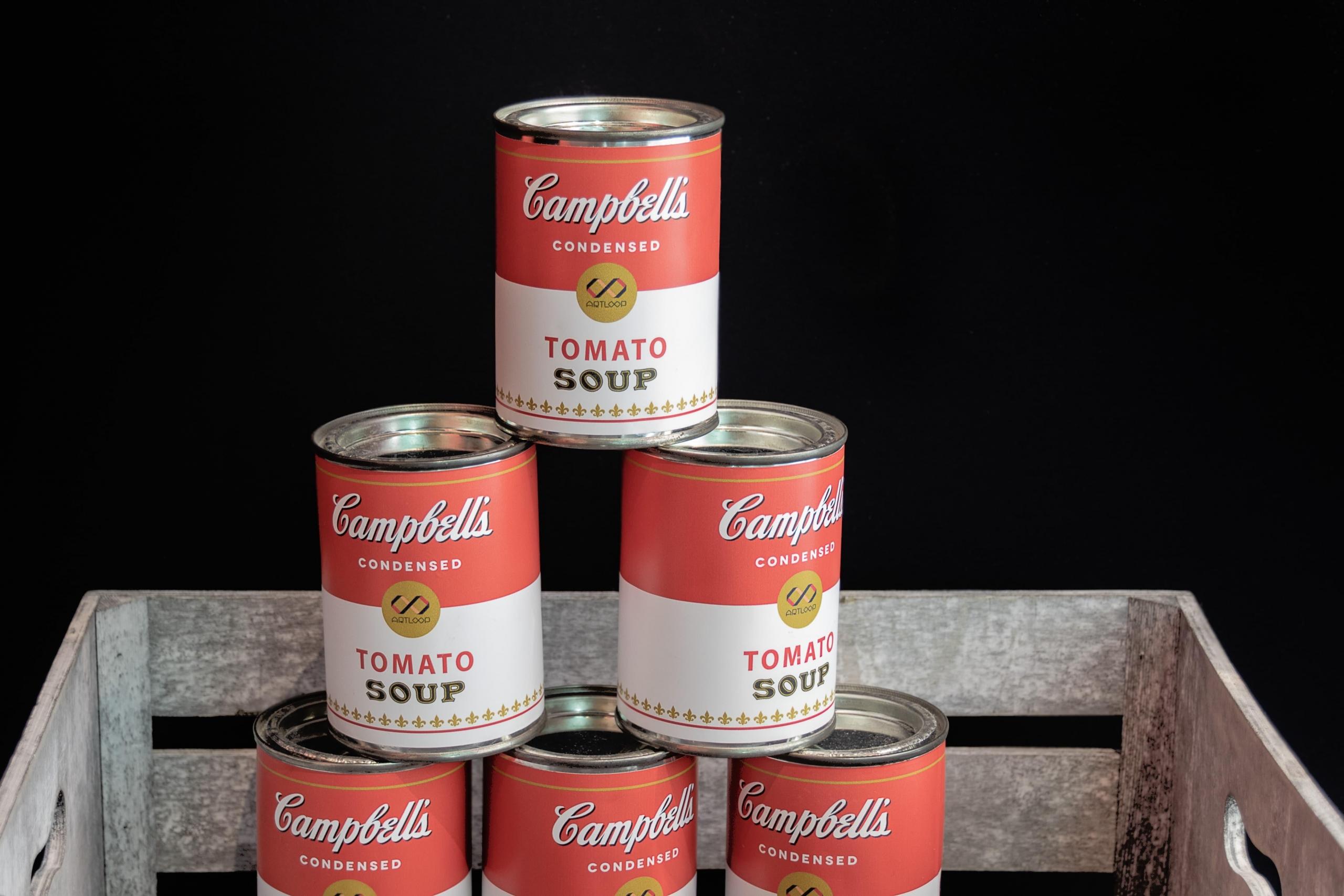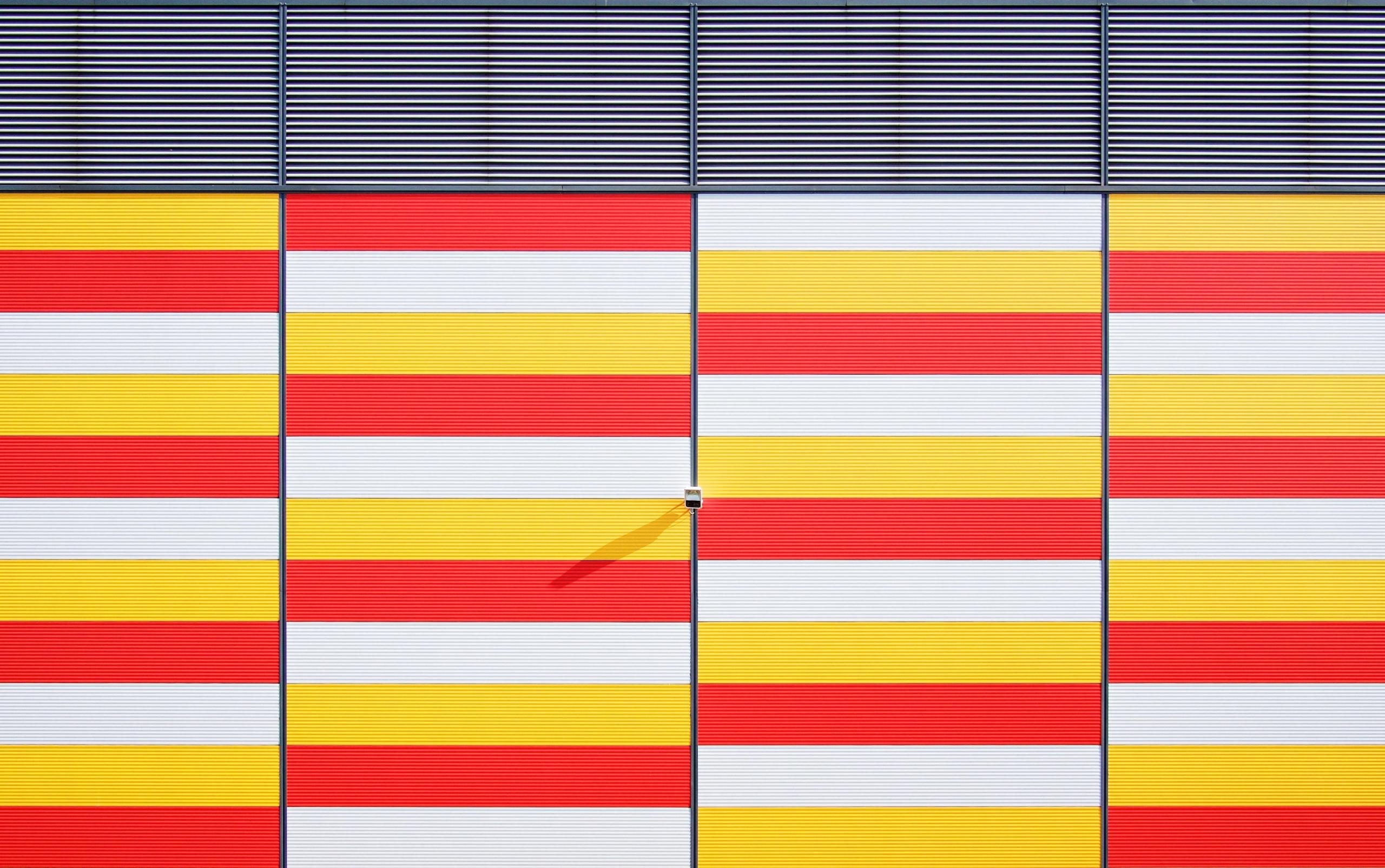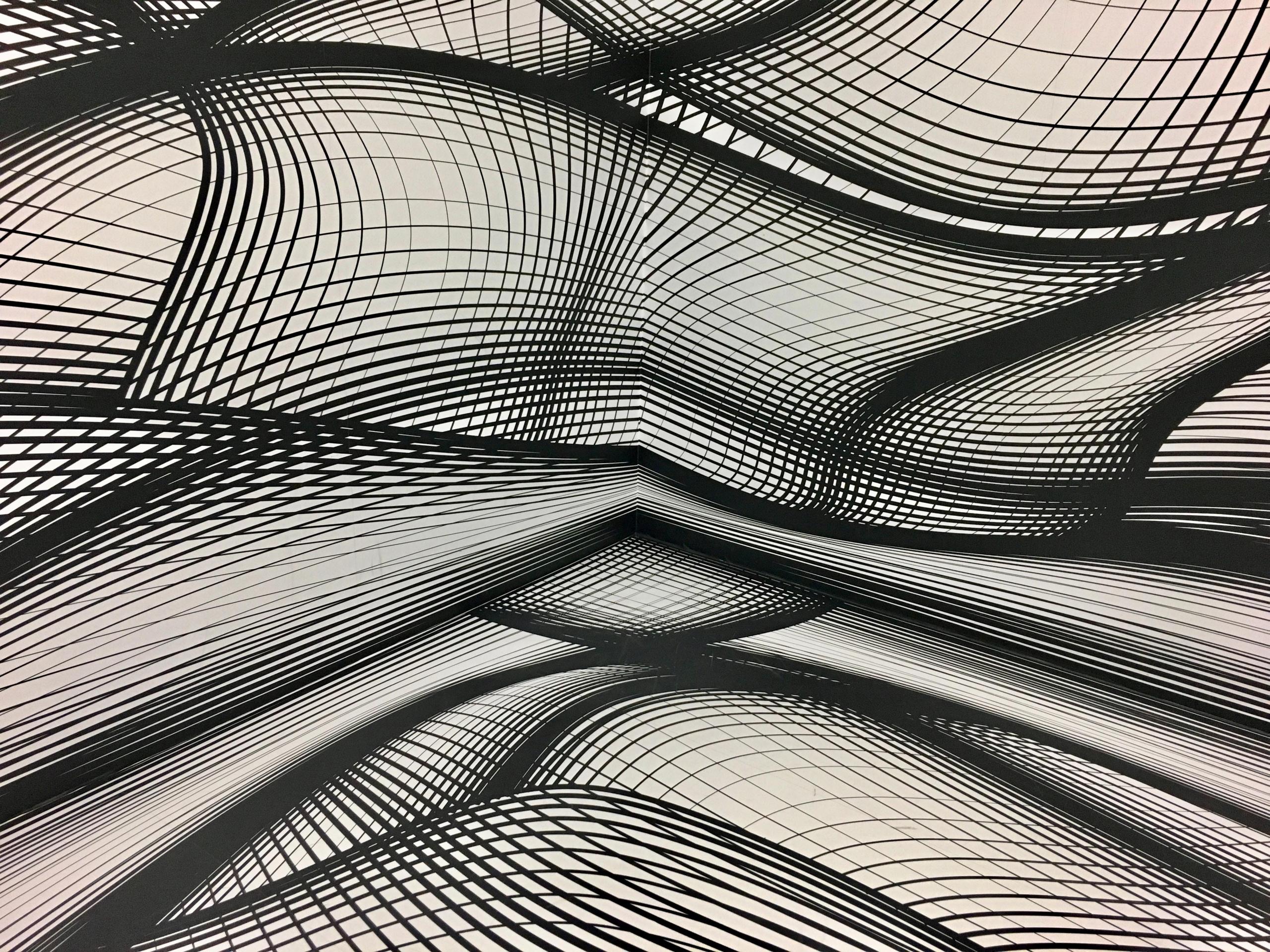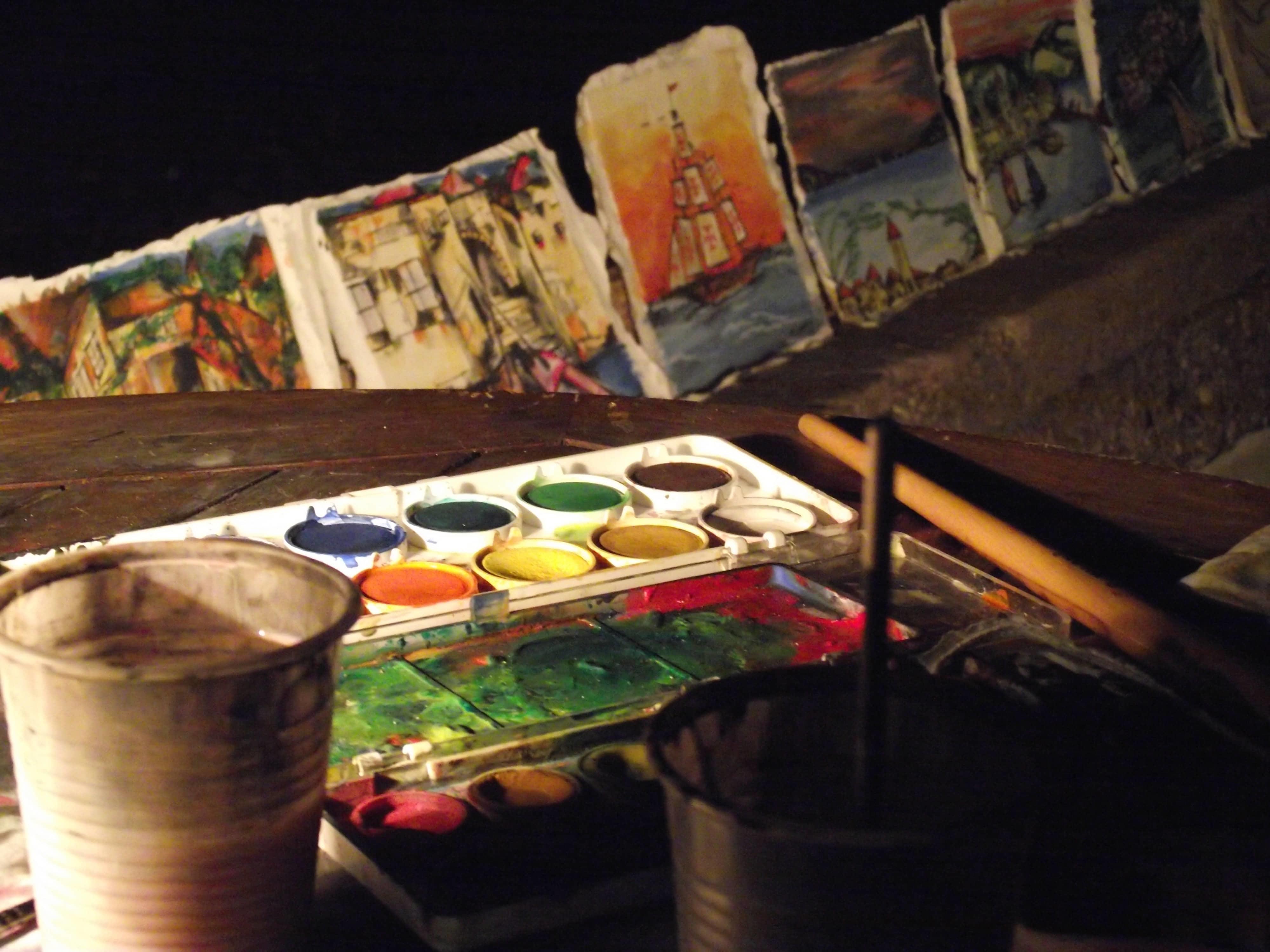Acrylic paints offer artists a world of creative possibilities, thanks to their quick-drying nature and versatility. Unlike traditional oil paints, acrylics dry rapidly, allowing for seamless layering and detailing without tedious waiting periods.
Beyond their practicality, acrylics enable artists to mimic the effects of other mediums like watercolors or oils by simply adjusting the paint consistency with water.
The range of surfaces suitable for acrylic painting knows no bounds, from traditional canvas and paper to unconventional materials like wood and brick, offering a number of textures to explore.
There have been many famous artists who paint with acrylics such as Andy Warhol, David Hockney, Robert Motherwell, Kenneth Noland, Bridget Riley and Mark Rothko. We'll explore these artists down below!

Andy Warhol
Starting out with a household name in the field of art, Andy Warhol used acrylic paints for many of his most iconic works of art.
Warhol caught the eye of the public with his striking depictions of pop culture figures, like Marilyn Monroe, and Elizabeth Taylor, a form of art he pioneered which was coined pop art. Using photos as inspiration, Warhol would use bold colours and acrylic paints to make his paintings really pop.
One reason why he preferred acrylics over other mediums is due to the brash, at times shiny, effect that they can produce. While this is seen by some as a negative in comparison to the more classic aesthetic of oil paintings, for what Warhol was trying to achieve, it was the best option.
As we already mentioned, acrylic paints lend themselves very well to the eye-catching nature of many of Warhol’s paintings, which was presumably his main justification for using them.
However, it’s clear that the esteemed artist was also very fond of the technique of layering, which is much easier to pull off using acrylics. So this might have been another factor which influenced his decision to go with the acrylic medium.

David Hockney
David Hockney is a British painter who, like Warhol, can also be labelled as a pop artist. He is responsible for many incredible acrylic-based paintings, the most famous of which is arguably the swimming pool scene known as ‘A Bigger Splash’.
Both rich in colour and bold in aesthetic, Hockney’s paintings are a visual delight. His blend of realistic and abstract techniques brought about intriguing results, the likes of which you can find your eyes lost in for long periods of time.
‘A Bigger Splash’ somehow manages to be both minimalist and full of imagery at the same time, which is a powerful combination which can leave you contemplating life itself.
As for why the famous artist opted for acrylics, he likely preferred the quick-drying nature as opposed to its counterpart oil paints. While relatively new on the scene while he was painting in the 50s, the emergent acrylic paint made layering a lot easier and allowed Hockney to build complex scenes through his paintings, the likes of which would at times replicate real-life scenes with great accuracy.
In fact, Hockney could be said to be one of the first pioneers of the medium of acrylic paint, as he used it almost exclusively in his work and was one of the first adopters.
Robert Motherwell
An influential American Abstract Expressionist painter, Robert Motherwell likened painting to music, in that it could stand on its own as something to be appreciated and enjoyed.
Robert Motherwell was part of a wave of abstract expressionist painters, along with the likes of Jackson Pollock, and Willem de Kooning, who adopted acrylic paints for the great versatility that they offered, particularly when it came to their fast-drying nature.
The great advantage of using acrylics with abstract painting for this group of painters, was that they could experiment much easier due to how soon the paint would dry after application. Layering was one of the techniques that Motherwell would employ heavily in his work, for example in his series of iconic paintings falling under the title ‘Elegy to the Spanish Republic’.

Kenneth Noland
Kenneth Noland was an American Colour Field painter, who was best known for his bold, abstract paintings which made the most of acrylic’s unique qualities.
An artist who operated around the same time as Motherwell, Kenneth Noland also appreciated the unique characteristics of the emerging medium of acrylic, but he used different techniques in his work.
Noland was particularly fascinated with Colour Field painting, which is the use of large blocks of single colours. To the untrained eye, some of Noland’s art can seem straightforward and/or easy to reproduce, but the precision of his strokes and his detailed knowledge of colour combinations are what made his work stand out.
So why did Noland prefer acrylics for the new (at the time) painting style called Colour Field? Well, mainly for the ease of layering they allowed for, and the bold colours available.
Layering is a technique that Noland relied upon to create his stunning visuals, and the range of colours gave him plenty of scope to realise his artistic vision.

Bridget Riley
An English Op Art painter (which is short for optical art), Bridget Riley embraced the medium of acrylics to create mesmerizing patterns and entrancing paintings.
While Riley didn’t work exclusively with acrylics, choosing not to use them until the latter stages of her career in art, she certainly made the most of them when she did start using them.
What eventually drew her to acrylics was actually what turns some professional artists away from the medium - which is the somewhat artificial visuals they can produce in comparison with oil paints. Riley was fascinated with the synthetic nature of acrylics, which lent itself incredibly well to optical illusions and mind-bending patterns.
A great example of how acrylics can be used to create interesting visual effects is ‘Achaean’. A series of lines of various colours, this painting is striking in its simplicity, but will have you mesmerised as your brain struggles to find a focal point.

Mark Rothko
Mark Rothko was an American painter whose work, although he never himself labelled as such, falls under the category of abstract expressionism.
Rothko used a combination of oil paints and acrylics in his paintings, which allowed him to create fascinating works of art combining the best of both mediums.
One thing he particularly enjoyed about using acrylics is how they reflected light, which contrasted with the way in which oil paints would reflect light. Due to the use of different mediums in his paintings, a fascinating phenomena has occurred over the passage of time: his paintings are changing in appearance as the paint slowly fades away.
While Rothko’s paintings, like those of Noland, seem relatively simple, they are all eye-catching and draw the attention of anyone who passes by them in a museum or gallery.
Rothko’s work can serve as a refreshing reminder that art doesn’t have to be ultra-realistic, or highly detailed to provoke a reaction in the audience, which should encourage even beginners to let their creativity flow uninhibited and without judgement.
Start Painting with Superprof
If you’re inspired by some of these famous artists who used acrylics, and now you want to produce your own enviable works of art, then it might be worth seeking out some one-to-one tuition to brush up on your knowledge of acrylic painting.
Here at SuperProf we have loads of qualified tutors on hand to help you get up to speed on whatever subject you can think of. If you’re looking for a tutor to help you with your acrylic painting in person, then you can use the find a tutor near me function on our website to see if there’s anyone near you. Alternatively, you can take online classes with our tutors from the comfort of your own home!















